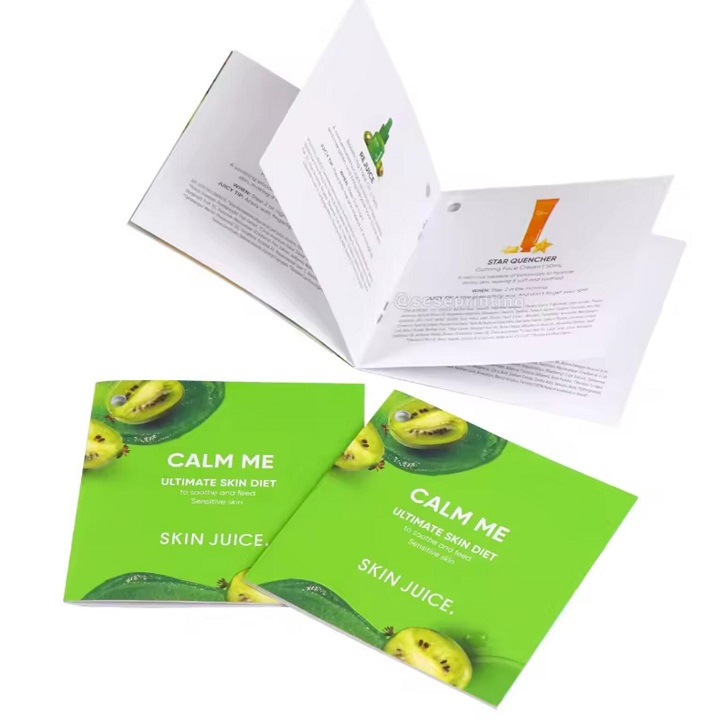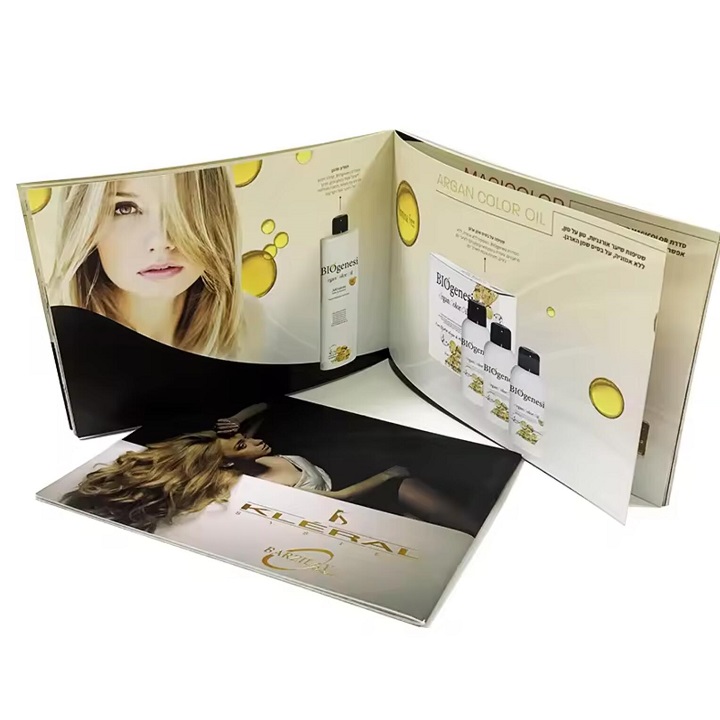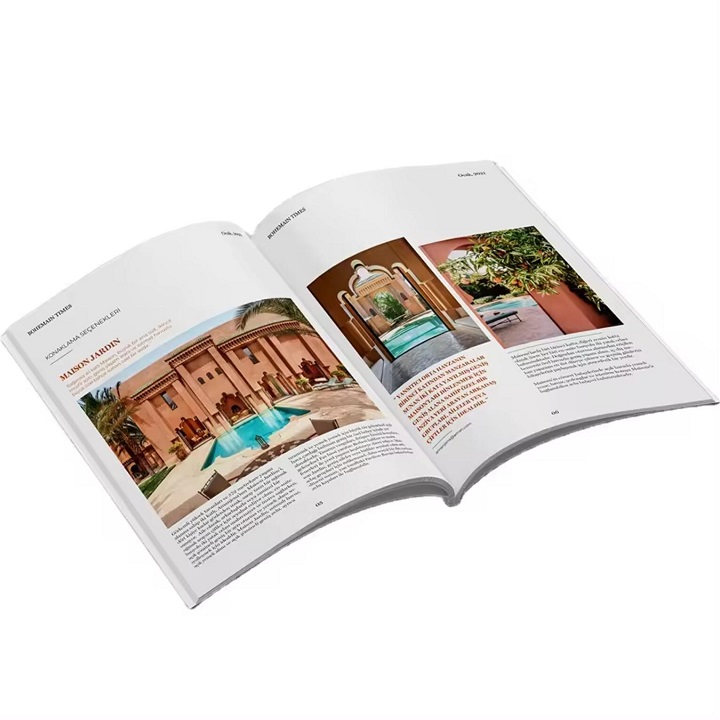Content Menu
● Introduction to Brochure Printing
● Step 1: Define the Purpose
● Step 2: Choose the Right Format and Fold
● Designing Your Brochure
● Printing Techniques
● Benefits of Brochures
● Case Studies
● Digital Integration
● Environmental Considerations
● Conclusion
● Frequently Asked Questions
Printing brochures remains a powerful marketing strategy in today's digital age. Despite the rise of digital media, brochures offer a tangible and visually appealing way to communicate information about products, services, or events. This article explores the process of printing brochures, from design considerations to printing techniques, and highlights why they remain a valuable tool for businesses and organizations.
Introduction to Brochure Printing
Brochure printing involves several key steps, including design, layout, and printing. The process begins with defining the purpose of the brochure, which could be to inform, promote, or invite. Understanding the objective helps in selecting the appropriate design elements and organizing the content effectively.

Step 1: Define the Purpose
Identify the main goal of your brochure. Is it to advertise a new product, provide information about an event, or offer instructional content? Knowing your objective helps in tailoring the design and content to appeal to your target audience.
Step 2: Choose the Right Format and Fold
Brochures come in various formats and folds, each serving a different purpose. Common folds include tri-fold, bi-fold, and gatefold. The choice of fold should align with the amount of information you need to convey and the desired visual impact.
Designing Your Brochure
Designing a brochure requires careful consideration of several elements:
Size: Standard sizes include 8.5x11 inches, but you can opt for larger or smaller sizes depending on your needs. Using a template ensures that your design fits the chosen size without stretching or cutting off important details.
Caption: Common brochure sizes include 8.5x11 inches and 11x17 inches.
Template: Templates help maintain the correct size and bleed specifications, ensuring that your design prints correctly. Check with your printer to see if they offer templates.
Caption: Using a template ensures accurate printing and prevents errors.
Artwork Resolution: Ensure that all graphics and images are at least 300 dpi to avoid a fuzzy appearance. Verify that the resolution remains consistent when saving your brochure in different file formats.
Caption: High-resolution images enhance the overall quality of your brochure.
Color Scheme: Select colors that align with your brand identity and appeal to your target audience. Consider the emotional impact of different colors on your viewers.
Caption: A well-chosen color scheme can enhance brand recognition.
Typography: Use clear, readable fonts that are consistent throughout the brochure. Ensure that headings and body text are distinguishable.
Caption: Proper typography improves readability and visual flow.

Printing Techniques
Once your design is complete, consider the following printing techniques to enhance the quality and effectiveness of your brochures:
Paper Stock: The choice of paper stock significantly impacts the feel and quality of your brochure. Options include matte, gloss, and textured papers. Matte papers are ideal for elegant designs, while gloss papers make colors more vibrant.
Caption: Different paper stocks offer varying textures and finishes.
Folds and Formats: Unique folds like accordion or z-folds can add visual interest and help guide the reader through the content.
Caption: Creative folds can enhance the brochure's visual appeal.
Proofing: Always order a hardcopy proof to ensure that the final print looks as intended. Electronic proofs may not reveal all potential issues.
Caption: A hardcopy proof is essential for verifying the final print quality.
Benefits of Brochures
Brochures offer several benefits as a marketing tool:
Tactile Experience: Brochures provide a physical interaction that digital media cannot match, making them more memorable.
Versatility: They can be used in various settings, such as trade shows, events, or as direct mail pieces.
Cost-Effective: Printing brochures is relatively inexpensive, especially when ordered in bulk.
Case Studies
Several businesses have successfully utilized brochures to enhance their marketing efforts:
Example 1: Product Launch
A tech company used brochures to introduce a new smartphone model. The brochures highlighted key features and specifications, leading to increased interest and sales.
Caption: Brochures can effectively promote new products.
Example 2: Event Promotion
An event organizer created brochures to promote a music festival. The brochures included schedules, artist profiles, and ticket information, resulting in higher attendance.
Caption: Brochures are effective for promoting events.

Digital Integration
While brochures are physical, they can be integrated into digital marketing strategies:
QR Codes: Include QR codes that link to your website or social media pages to drive traffic and engagement.
Caption: QR codes connect physical brochures to digital platforms.
Digital Versions: Create digital versions of your brochures to share via email or on your website, expanding your reach.
Caption: Digital brochures can be easily shared online.
Environmental Considerations
When printing brochures, consider the environmental impact:
Sustainable Paper: Choose paper stocks that are recycled or sustainably sourced to reduce your environmental footprint.
Caption: Sustainable paper options support eco-friendly practices.
Digital Alternatives: Consider digital brochures for situations where physical copies are not necessary.
Caption: Digital brochures offer an eco-friendly alternative.
Conclusion
Printing brochures is a strategic marketing approach that combines visual appeal with tangible interaction. By carefully designing and printing your brochures, you can effectively communicate your message and capture the attention of your target audience.
Frequently Asked Questions
What is the standard size for brochures?
The standard size for brochures is typically 8.5x11 inches, but other sizes like 11x17 inches are also common.
Why is image resolution important in brochure printing?
High-resolution images (at least 300 dpi) ensure that your brochure prints clearly and professionally, avoiding fuzzy or pixelated visuals.
What are the benefits of using matte vs. gloss paper?
Matte paper is ideal for elegant designs and provides a subtle finish, while gloss paper makes colors more vibrant and eye-catching.
How can I ensure my brochure stands out?
Use unique folds, oversized formats, and high-quality paper stock to make your brochure visually appealing and memorable.
Why should I order a hardcopy proof?
A hardcopy proof allows you to verify that the final print looks as intended, revealing any potential issues with layout, color, or text that electronic proofs might miss.
Can brochures be used for digital marketing?
While brochures are physical, they can be scanned or photographed and shared digitally to reach a broader audience.
How do I integrate brochures with digital marketing?
Use QR codes to link brochures to digital platforms, and create digital versions to share online.
What are some eco-friendly options for printing brochures?
Choose recycled or sustainably sourced paper stocks to reduce environmental impact.
































